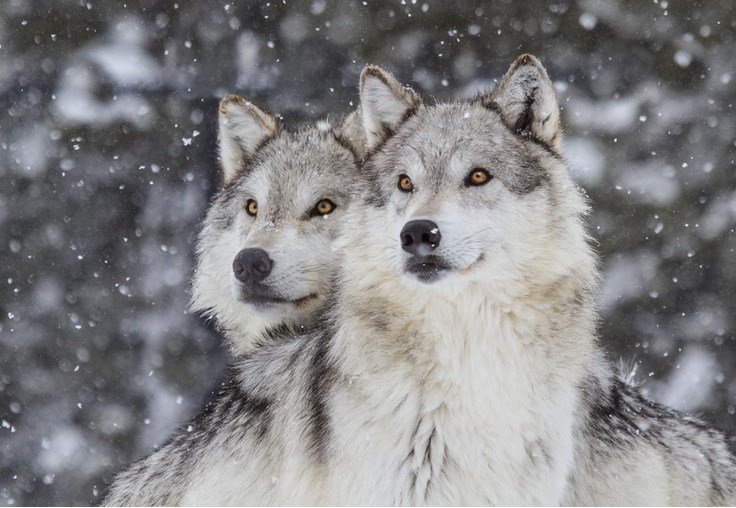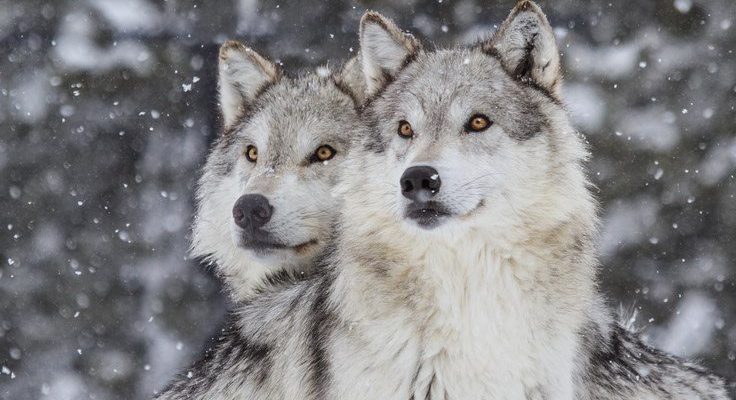
These magnificent animals are more than just majestic; they are vital to their ecosystem. Just like a compass guiding lost travelers, the tundra wolf helps maintain balance in the Arctic environment. Let’s dive into some amazing facts about these creatures that make them stand out in the animal kingdom.
1. Unique Adaptations for Survival
The tundra wolf has some incredible adaptations that help it survive in frigid temperatures. For starters, their fur is thick and double-layered. The outer coat is long and water-resistant, while the undercoat provides insulation. This combination keeps them warm and dry, even during blizzards. Imagine wearing a cozy down jacket, but for them, it’s all-natural.
Additionally, these wolves have large, padded paws that act like snowshoes, allowing them to walk effortlessly across the snow without sinking in. This adaptation helps them chase prey without exhausting energy, which is crucial when food is scarce. Their keen sense of smell also plays a huge role; they can detect prey from miles away, making them expert hunters in this frozen expanse.
2. Social Structure and Pack Life
Tundra wolves are known for their strong social bonds. They live in packs, which can vary from two to over a dozen wolves. Each pack operates like a close-knit family. The pack typically consists of a breeding pair and their offspring, who stay together until they’re old enough to establish their territories.
You might wonder why they stick together. Packs work together to hunt and protect each other from threats. Working as a team, they can take down larger prey like caribou. Think of it as a well-coordinated dance—each member has a role that contributes to the pack’s success. This social structure helps them thrive in an environment where survival depends on cooperation and teamwork.
3. Diet and Hunting Techniques
When it comes to food, tundra wolves are opportunistic hunters. Their primary diet consists of large herbivores like caribou, musk oxen, and even smaller animals like hares and birds. Wolves are often seen hunting in groups, using their numbers to isolate and bring down larger prey.
Interestingly, they also display an incredible hunting technique known as “surge and ambush.” This means they’ll initially chase their prey at high speeds, tiring them out, and then surround them to make the kill. This strategy requires not just physical strength but also intelligence and teamwork. Just like a strategic game of chess, each move counts.
4. Communication Within the Pack
Communication is key in a tundra wolf pack. They use various vocalizations, body postures, and even facial expressions to convey messages. Howling is perhaps the most famous form of communication. It helps the pack stay connected when they’re far apart and can even serve to warn other packs to stay away.
When a wolf howls, it can send a specific message to its pack members, letting them know where they are. Imagine being out in a snowy wilderness and hearing that distant call—it’s both eerie and beautiful. Their howls aren’t just for calling each other; they’re also a way to assert territory, letting neighboring packs know they’re nearby.
5. Territorial Behavior
Speaking of territories, tundra wolves are very protective of their home range. They typically establish a territory that can cover hundreds of miles. This vast area is essential for their hunting and breeding, as it ensures they have enough resources to support their pack.
Tundra wolves often mark their territory by scent-marking with urine. This is a way of saying, “This is ours!” It’s like putting up a “No Trespassing” sign, but a lot more natural. If an intruder enters their territory, the pack may confront them to defend their space. This kind of behavior helps maintain the delicate balance within their ecosystem, controlling prey populations and ensuring the health of their habitat.
6. The Role of Tundra Wolves in the Ecosystem
Tundra wolves play a critical role in their ecosystem as apex predators. Their hunting practices help control the population of herbivores, which in turn affects plant life and the overall health of their environment. When wolves hunt caribou, for instance, they help prevent overgrazing, allowing vegetation to thrive.
This balance is essential. If the wolf populations fluctuate, it can lead to an overabundance of herbivores, which can damage the vegetation in their habitat. By keeping things in check, tundra wolves help maintain a healthy and functioning Arctic ecosystem. It’s a reminder of how interconnected all living things are, regardless of the environment they inhabit.
7. Mating and Reproduction
Tundra wolves usually mate in late winter, and the breeding pair is often the only one to reproduce in the pack. After a gestation period of about two months, the female gives birth to 4 to 7 pups. Here’s the thing: those pups are incredibly vulnerable at birth and depend on their parents for everything.
During the first few months, the parents and other pack members work together to provide food for the growing pups. They’ll regurgitate food for the little ones until they’re old enough to join hunts. This nurturing behavior is a beautiful display of the pack’s commitment to ensuring the survival of the next generation.
8. Conservation Status and Threats
Despite their strength, tundra wolves face numerous threats. Habitat loss due to climate change and human encroachment is one of the biggest challenges they encounter. As the Arctic warms, their habitats shrink, and food sources become less predictable.
Additionally, hunting and poaching pose direct threats. In some areas, wolves are hunted for their fur, or to reduce competition with livestock. Conservation efforts are crucial to protect these magnificent animals and their habitats. By supporting initiatives aimed at preserving their ecosystems, we contribute to the survival of not only tundra wolves but also the intricate systems they help sustain.
Each fact about tundra wolves reveals a piece of their incredible story, showcasing how these resilient animals survive and thrive in one of the harshest environments on Earth. Protecting them means protecting a vital part of our planet’s biodiversity.
As we learn more about these fascinating creatures, it’s essential to nurture a connection to the natural world around us. Through understanding and respect, we can contribute to the preservation of the tundra wolves and the fragile ecosystems they inhabit.

